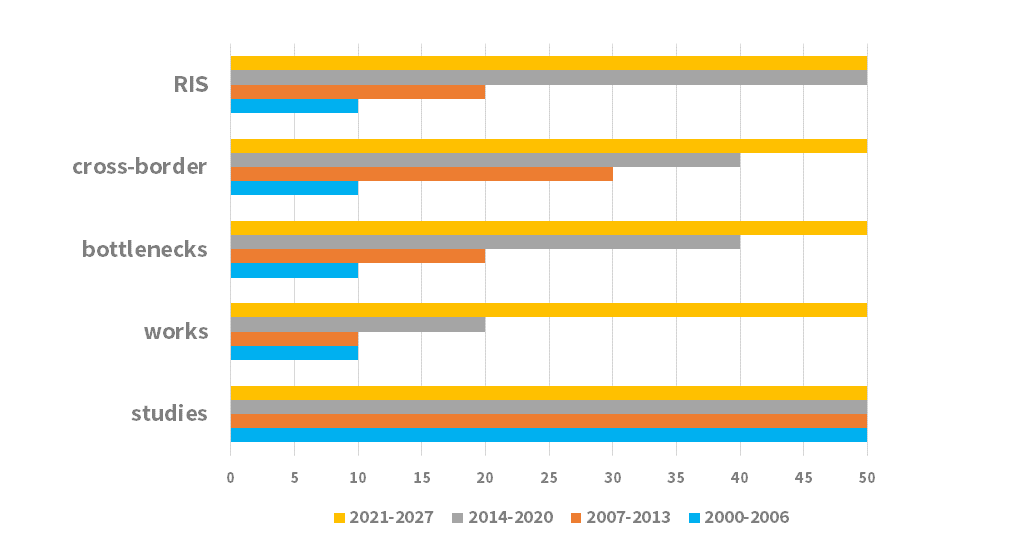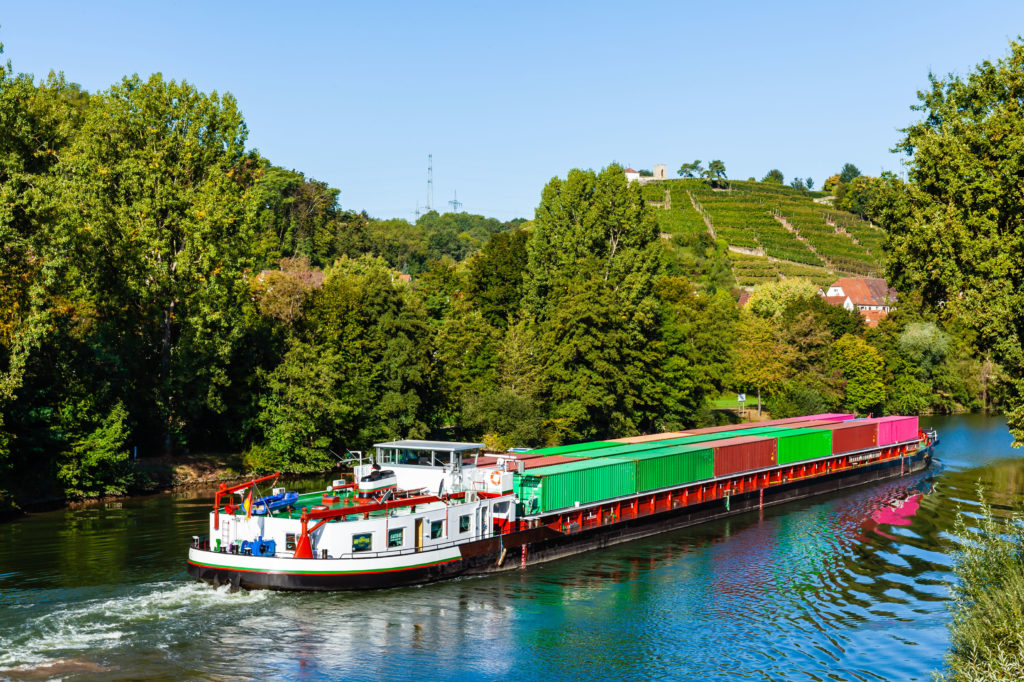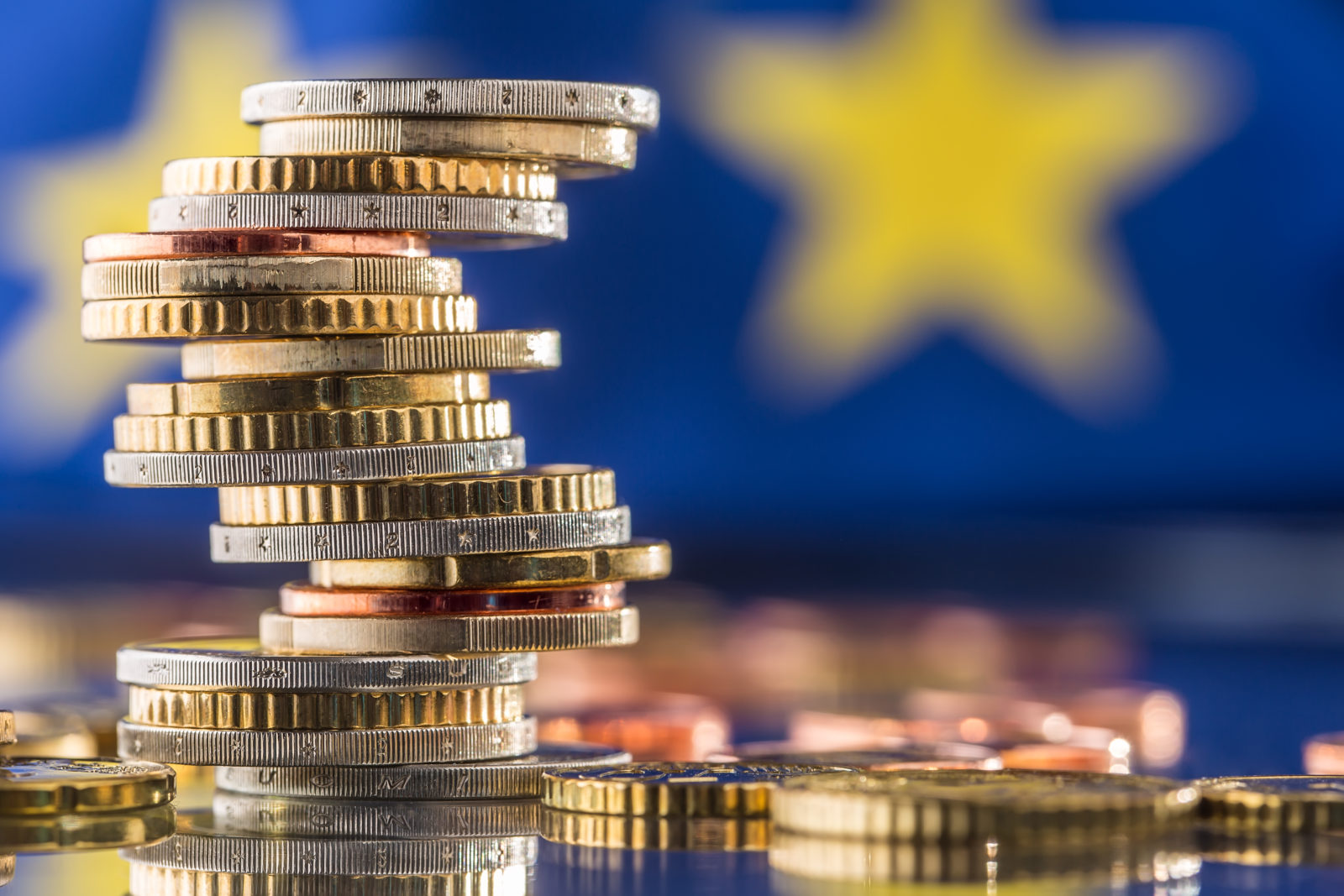Financing
Waterway transport is supported through the funding and financing programmes Connecting Europe Facility, Horizon Europe, LIFE, the Innovation Fund, the Recovery and Resilience Facility and the EU Structural and Investment Funds.
Connecting Europe Facility
The EU institutions approved in 2021 the EU budget for 2021-2027. Under the 2nd Connecting Europe Facility, the maximum co-financing rate for inland waterway studies and works increased to up to 50%, and the maximum rate in cohesion countries remains at 85%.
The Connecting Europe Facility has co-financed and continues to co-finance numbers of inland waterway infrastructure projects. The Commission started to prepare the work for CEF3 (2028-2034) with support studies calculating the infrastructure investment needs for network completion, overall resilience, connections with third countries. The coordinators plead for allocating priority to cross-border projects and projects strengthening the resilience and the security of the network. It is important to define what precisely means a cross-border project, because national projects can have a crucial impact on cross-border transport, especially in inland waterway transport, where bypasses are rather the exception than the rule. National projects are also very important to achieve good navigation status and to climate proof the network. Users of waterway transport have stressed that reliable waterways are the first condition to move more cargo to inland waterways, an essential goal of the EU Green Deal.
INE is also member of the CEF campaign which groups transport organisations across mode and sectors pleading for an adequate budget as transport is the backbone of the internal market and international trade. Safe, secure, sustainable, climate proof and innovative transport infrastructure can only materialise when there is sufficient public investment.
CEF general envelope: max. co-financing rates in %


What is the Connecting Europe Facility (CEF) and why is it important?
- CEF is the EU funding instrument to achieve trans-European networks.
- CEF Transport will have co-financed projects with a total budget of 24.05 billion euro in 2014-2020. 5.58% has been allocated to inland waterways in 2014-2019. CEF also enables investment in the implementation of new technologies and innovation, and it supports synergies between transport, telecommunications and energy, which is relevant for digitalisation and decarbonisation of transport.
- CEF2 is the successor programme for the period 2021-2027 with an overall budget of €33.71 billion, including for transport: €25.81 billion. Max. co-financing for waterways is up to 50% for the general envelope, up to 85% for the cohesion envelope..
Horizon Europe programme
The EU research and development programmes have co-financed and the current Horizon Europe continues to co-finance numbers of inland waterway projects to support policy coordination, to research alternative fuels and new vessels concepts, to prepare digitalization and automation.
The current programme also co-finances research into climate adaptation and resilience. INE advocates increased attention and investment in this topic. Climate resilient waterways are the backbone to achieve the European Green Deal objective of modal shift. More research and development is essential to develop effective nature based and flexible solutions for the different river basins with navigable waterways across the EU. Developing synergies with other sectors is also paramount to avoid negative cascading effects and maladaptation.
Taxonomy as incentive for sustainable transition
It is absolutely fundamental to direct public and private investments towards sustainable projects to achieve the EU climate goals. By classifying environmentally sustainable economic activities and providing criteria to what they should comply with, the EU taxonomy can enable the scale-up of sustainable investments. In the field of inland waterways, it is an opportunity to combine climate mitigation and adaptation, modal shift and environmental sustainability.
INE advocates two changes to the taxonomy climate change delegated act :
- Create a level playing field between rail and waterway infrastructure with regard to the scope of eligible activities in the taxonomy climate delegated act.
- The taxonomy climate delegated act currently excludes dredging from the scope of eligible activities for climate mitigation and adaptation activities in water infrastructure. Dredging activities are nevertheless necessary to implement climate change adaptation activities and nature based solutions. INE recommends establishing criteria for sustainable and responsible dredging in order to include this activity in line with the Integrated Sediment Management Guidelines and good practices in the context of the Water Framework Directive.


